
Annual Forbs Around Las Vegas, Vegetation Around Las Vegas
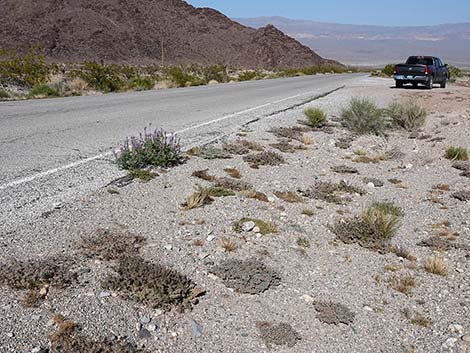 Arizona Lupine at the edge of the pavement |
General: Arizona Lupine (Lupinus arizonicus) is a large, bushy annual forb. The leaves are radial (palmately compound). The flowers are purple and are borne on stalks above the leaves with a white or yellowish patch and dark spots on the upper lip of the flower. There are many species of Lupine, and they can be hard to identify. This species is an annual. The cotyledons are petioled and deciduous. The leaves are without long hairs. Leaflets 4–12 mm wide. The flowers purple and spiraled with a short pedicel about as long as flower bud, and the lower margin of the keel is ciliate but glabrous near the tip. The fruits are oblong with more than 2 seeds. Arizona Lupine is a fairly common component of desert vegetation communities in sandy washes and gravel slopes. Around Las Vegas, look for this species in the southern part of Death Valley and at Lake Mead. Family: Legume (Fabaceae). Plant Form: For an annual forb, large and bushy, mound-shaped. |
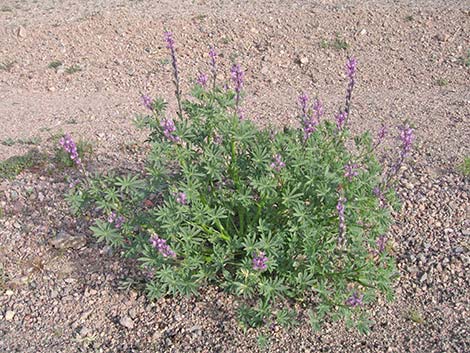 |
Height: To about 2 feet, usually shorter. Stems: Many, erect. Leaves: Palmately compound; 6-10 leaflets, each to about 1.5-inches long and 1/3-inch wide. Flowers: Blooms in the spring. Inflorescence to about 10-inches long; flowers spiraled about stalk. Flowers two-parted, upper and lower parts (lips) about equal in size; purple. Upper lip with yellowish and spots at center. Habitat: Washes; sandy soils. Elevation: To about 3,000 feet. Distribution: California, Nevada, and Arizona deserts. Comments: |
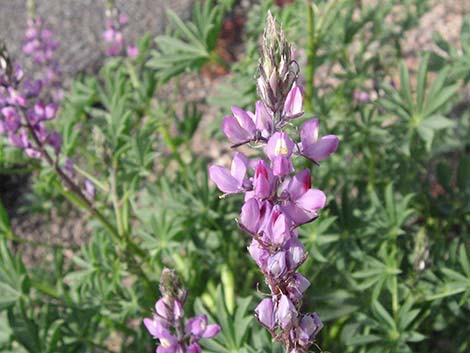 |
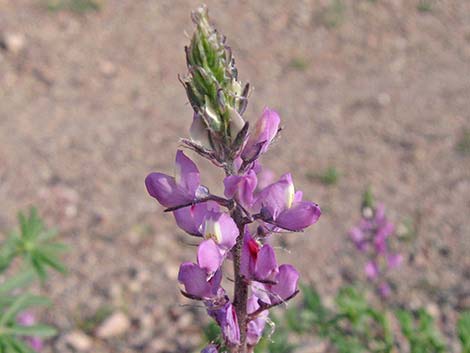 |
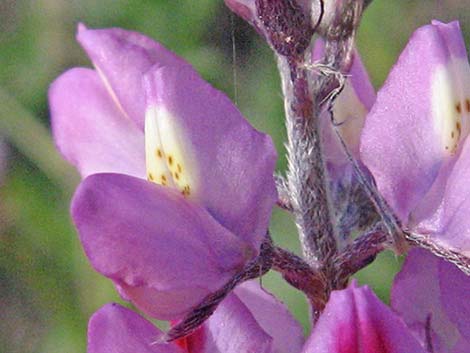 Purple flowers two-parted, upper and lower lips equal in size |
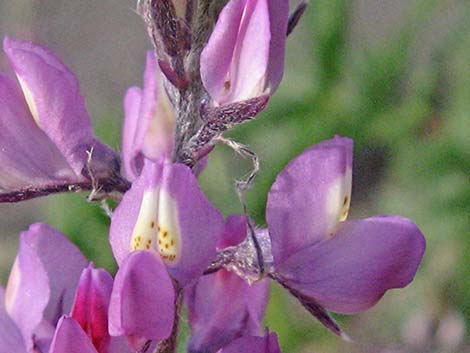 Upper lip with white or yellowish patch and dark spots |
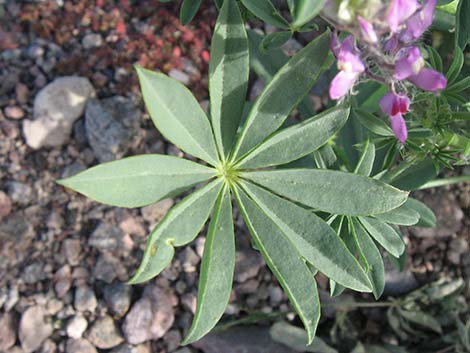 Palmately compound leaves are typical of lupines |
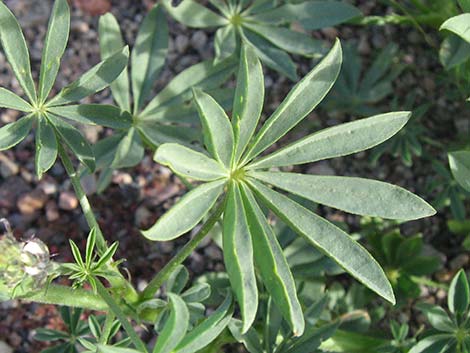 Palmately compound leaves are typical of lupines |
Note: All distances, elevations, and other facts are approximate. Names generally follow the USDA database.
![]() ; Last updated 240905
; Last updated 240905
| All Annual Forbs | Plant Species Index | Glossary | Copyright, Conditions, Disclaimer | Home |